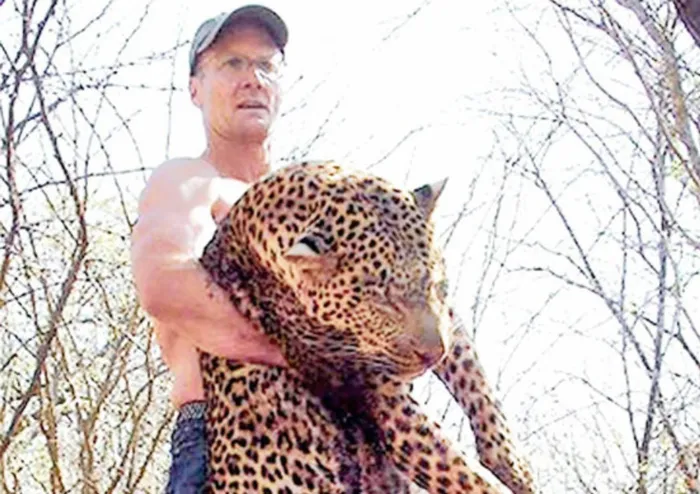Time running out for world’s leopards

Walter Palmer, a dentist from Minnesota hold a what looks to be a dead leopard. Picture: River Bluff Dental Facebook page Walter Palmer, a dentist from Minnesota hold a what looks to be a dead leopard. Picture: River Bluff Dental Facebook page
Durban - Leopards, the most widespread wildcat species in the world, have lost nearly 75 percent of their territorial hunting grounds since the start of the Industrial Revolution and continue to be squeezed into ever-shrinking living spaces.
This is the conclusion of a new three-year study by a group of 14 researchers led by Andrew Jacobson of the Zoological Society of London, who cautioned that it was a misconception that leopards remained relatively abundant or were not seriously threatened.
Jacobson and his colleagues note that before 1750 the species was spread across nearly 35million square kilometres of land, from the southern tip of Africa into the Middle East, Central Asia, India and remote parts of Russia. Now they estimate that leopards occupy just 8.5million square kilometres, having been wiped out in several countries.
A separate scientific assessment by the International Union for the Conservation of Nature suggests that a handful of snow leopards still survive in the remote Manchurian mountains between Russia and China, while in the desert regions of the Middle East they have not been seen for 10 years since previous reports of eight survivors in Israel’s Negev highlands and Judean desert.
This report suggests Southern Africa still has the healthiest population levels in the world, but they are declining because of human pressure.
Jacobson said the wide geographic spread of these spotted cats, their remarkable ability to adapt and their secretive nature had contributed to misconceptions that the species was not severely threatened.
“We find that not only are several subspecies and regional populations critically endangered, but also the overall range loss is greater than the average for large land-based carnivores.”
While leopards were still able to survive in areas with dense human populations, vast areas of leopard range had been converted to crop farms in Africa and Asia, fragmenting the areas where these cats could hunt and maintain territory.
As the number of antelope and other small wild animals declined from land clearance or the bushmeat trade, leopards were forced to prey on livestock, sparking more intense persecution by humans.
Other major threats to their survival included the illegal trade in leopard skins and other body parts. Jacobson notes that 18Â000 leopard claws were seized in a single wildlife trade raid in Uttar Pradesh in India four years ago, while spotted cat skins and teeth were still openly traded throughout Africa.
Unregulated trophy hunting remained another serious threat, with South Africa imposing a complete ban on leopard hunting for this year owing to concern about the lack of reliable information on leopard populations in this country.
While there is a shortage of reliable population estimates for leopards across the world, a census by Ezemvelo KZN Wildlife in 2007 suggested that there were just 487 of these cats left in KwaZulu-Natal. Nearly 200 were thought to live in protected parks and about 300 on private and communal land.
Officials have reported that more than 100 leopard skins have been found at the home of a single trader in the Jozini area over the past few years.
In the latest Red List of Endangered Species, the International Union for the Conservation of Nature reports that leopards have disappeared entirely from large parts of west Africa and north Africa. In central Africa, the species range remained under growing pressure from bushmeat trade and illegal hunting, while in east Africa leopards appeared to have vanished from large parts of Tanzania.
In India, especially, domestic dogs were becoming common prey for leopards as their natural prey disappeared.
The Mercury